The below artworks are the most important in Modern Art – that both overview the major ideas of Modern Art, and highlight the greatest achievements by each artist. Don’t forget to visit the artist overview pages of the artists that interest you.
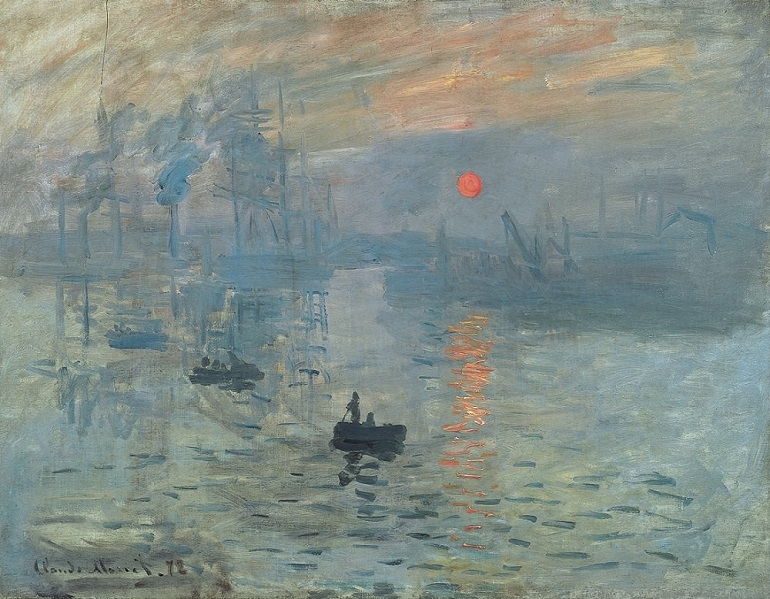
Artist: Claude Monet
Artwork description & Analysis: In this seminal work of modern art, Monet’s loose handling of paint and his focus on light and atmosphere within the landscape scene are all key characteristics of Impressionism, which is widely considered the first fully modern movement. Monet’s use of abstraction evokes what the artist sensed or experienced while painting the scene, which was a highly unusual approach for a painter to adopt at the time. The title of the work, Impression, Sunrise not only provided critics with the name that the movement would later receive, but also conveys the transitory, fleeting and subjective nature of the painting. It is Monet’s visual impression of what he observed during that sunrise.
Oil on canvas – Musée Marmottan Monet
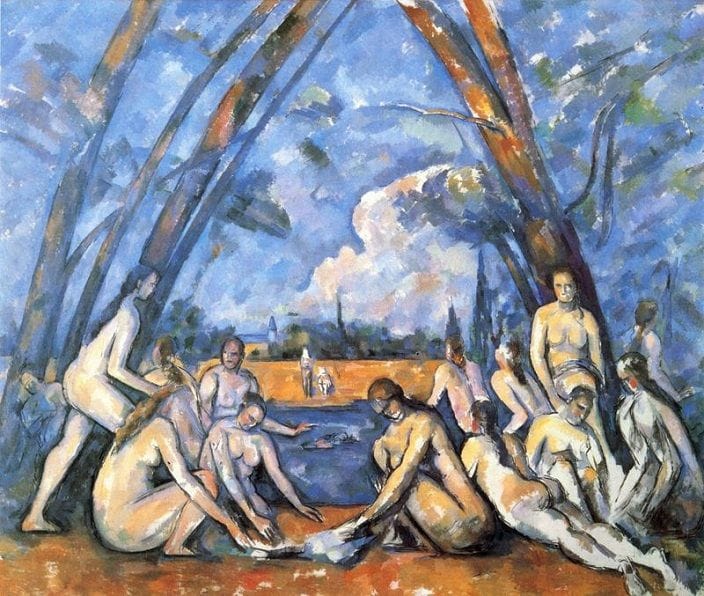
Artist: Paul Cézanne
Artwork description & Analysis: The Large Bathers is one of the finest examples of Cézanne’s exploration of the theme of the modern, heroic nude within a natural setting. The series of nudes are arranged into a variety of positions, like objects in a still life, under the pointed arch formed by the intersection of trees and the sky. Cézanne was attempting a departure from the Impressionist motifs of light and natural effect and instead composed this scene as a series of carefully constructed figures, as if creating sculpture with his paintbrush. He was more concerned with the way the forms occupied space than with recording his visual observations. This destruction of regular illusionism and the radical foray into increased abstraction is considered an important precursor to Cubism.
Oil on canvas – The Philadelphia Museum of Art
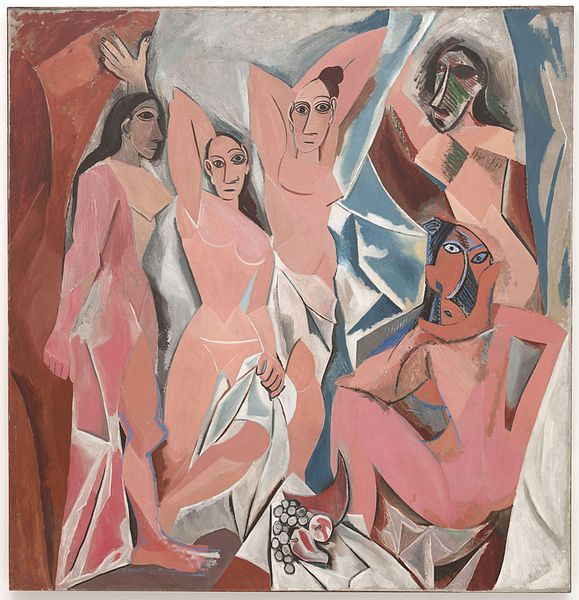
Artist: Pablo Picasso
Artwork description & Analysis: For Les Demoiselles d’Avignon, Picasso gathered inspiration from a variety of sources, including African tribal art, Expressionism, and the Post-Impressionist paintings of Paul Cézanne. Assimilating these seemingly disparate sources in one piece was a new approach to art making and conveys just how much artists’ perspectives expanded with the rise of modernism. The painting originally raised significant controversy for its depiction of a brothel scene and for the jagged, protruding, and abstract forms used to depict the women. It is also widely considered the artwork that launched the Cubism movement. The multiplicity of styles incorporated within this work – from Iberian sculpture referenced in the women’s’ bodies to the sculptural deconstruction of space derived from Cézanne – not only represent a clear turning point in Picasso’s career, but make the painting an incredibly distinct achievement of the modern era.
Oil on canvas – Museum of Modern Art, New York City
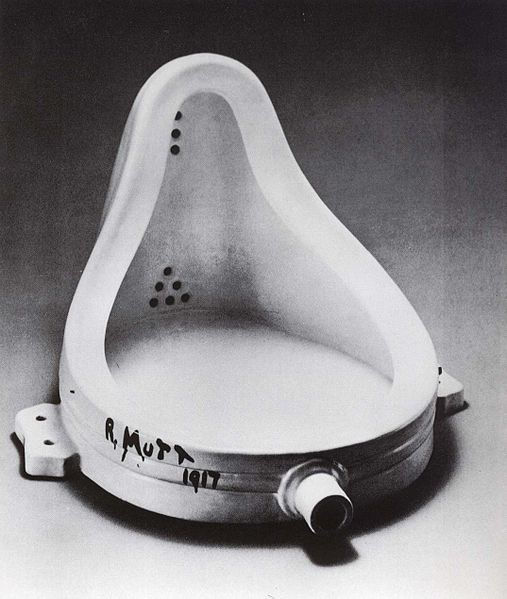
Artist: Marcel Duchamp
Artwork description & Analysis: Duchamp’s invention of the readymade – a manufactured, found object divorced from its utilitarian purpose and presented in a new way as art – helped redefine what constituted a work of art within the modern era. Henceforth, a unique work of art no longer required the act of creation by the artist or visual evidence of the artist’s hand in its production, the artist merely needed to designate the work as art for it to be considered as such. Duchamp’s Fountain is a mass-produced porcelain urinal, turned on its back and inscribed with the name R. Mutt, a combination of a plumbing company name and a comic. By using an everyday, prefabricated object Duchamp forced the viewer to reconsider the definition of art and who makes that definition. This work in particular, and other readymades, were major influences on the later movements of Pop art, which focused on combining low and high art, and Conceptualism, wherein the idea behind the artwork is as important as the final object.
Porcelain – Philadelphia Museum of Art
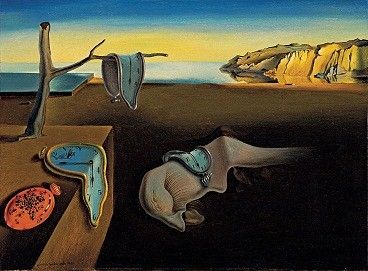
Artist: Salvador Dalí
Artwork description & Analysis: This iconic Surrealist painting naturalistically depicts an otherworldly landscape where time is a series of melting watches surrounded by swarming ants that hint at decay, an organic process which held great fascination for Dalí. He sought to portray “images of concrete irrationality,” bringing haunting dreamscapes, like this allegorically empty space where time has no power, out of the subconscious mind and onto the canvas. Dalí’s celebrated and vivid imagination, his fascination with dream imagery and metaphor, and his exploration into the human subconscious all follow the key characteristics of the Surrealism movement in the early-20th century.
Oil on canvas – Museum of Modern Art, New York City
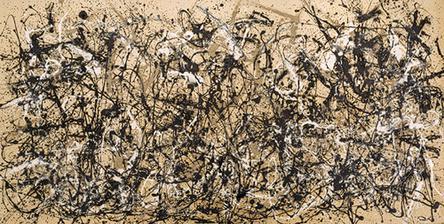
Artist: Jackson Pollock
Artwork description & Analysis: Through the development of his “drip” style of painting, and thedelicate dance executed in the process of creating the work, Jackson Pollock helped define the idea of Action Painting. With these paintings, Pollock – one of the most famous Abstract Expressionists – discovered a new abstract, visual language for his unconscious that moved beyond the Freudian symbolism of the Surrealists. He broke up the rigid, shallow space of Cubist pictures, replacing it with a dense web of lines and forms, like an unfathomable galaxy of stars. In some respects this work evokes both Impressionism and Surrealism, in the loose, gestural application of the paint and the unconscious nature of the expression laid down on the canvas.
Enamel on canvas – The Metropolitan Museum of Art, New York City
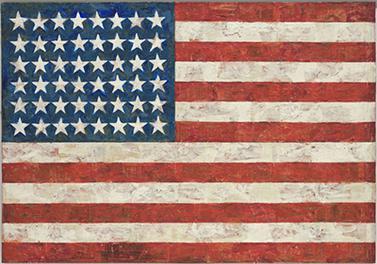
Artist: Jasper Johns
Artwork description & Analysis: Flag, Johns’ first major work, broke away from the emotionally driven style of the Abstract Expressionists by portraying a recognizable, everyday object, which according to Johns is “seen but not looked at.” Although the work is representational, the painting is also abstract in its many textures, layers, and materials, including strips of newspaper painted over with encaustic, and the tactile brush strokes that create a painterly, expressive surface. Johns turns a flag, a three-dimensional object, into a two-dimensional painting. This practice of appropriating familiar objects recalled the practices of the earlier Dadaists, particularly Marcel Duchamp, who revolutionized modern art with the readymade. Johns’ approach with his Flag paintings renewed interest in Dada and was as an important precursor to Pop art particularly through his use of everyday, mass-produced objects.
Encaustic, oil, and collage on fabric mounted on plywood, three panels – Museum of Modern Art, New York City
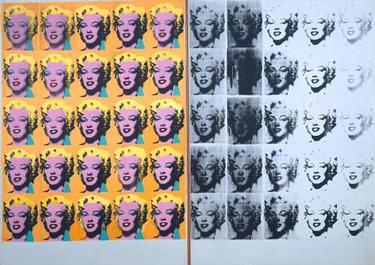
Artist: Andy Warhol
Artwork description & Analysis: Andy Warhol completed this work (the first of many devoted to Marilyn Monroe) shortly after the actress’s untimely death in August 1962. The image of Monroe, which Warhol recycled and used for all his Marilyn silkscreen paintings, was taken from a publicity shot originally used for the film Niagara. Not dissimilar from Warhol’s motifs of Campbell’s soup cans or Brillo boxes, the artist stacks and repeats the same image of Monroe here as if she were a consumer product in a grocery store. By juxtaposing the bright colors with monochrome in the diptych, Warhol alludes to her mortality. Though Warhol was a great admirer of the actress, he acknowledged in this and similar works that celebrity was itself a consumer product. Marilyn Diptych is designed as both a tribute to the late icon and a harsh commentary on how we had come to treat these pop cultural icons in the modern era.
Silkscreen ink on synthetic polymer paint on canvas – Museum of Modern Art, New York City

Artist: Richard Serra
Artwork description & Analysis: One Ton Prop presages Serra’s mature works, where gravity, weight, counterforce, sinuous movement, and other physical and visual properties are embodied by steel. This sculpture, consisting of four rolled sheets of lead propped on each other, is less a visual exercise for the viewer and more of an intellectual one, obliging one to contemplate the physical properties that allow the piece to remain upright rather than collapse. The unprecedented complexity of such a work is fairly typical of post-minimal sculpture, which relied upon a variety of visual sources and theories for inspiration. While One Ton Prop embodies certain principles of Minimalism, Conceptualism, and even Dada, it is generally referred to as Process art because the process of its construction is inherent and apparent in the final work. The multiplicity of sources and possible styles is typical of the pluralist contemporary world, and the contemporary art that goes with it.
Lead antimony, four plates – Museum of Modern Art, New York City

